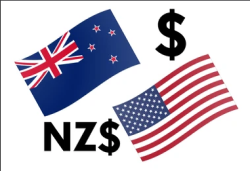
Flexity Analysis for NZDUSD
Forecast Overall(Short-Term, Long-Term): ST=Strong Down LT=Probably Down
Forecast Methods(Short-Term, Long-Term):
[Method0] ST=Down LT=Up
[Method1] ST=Down LT=The price is expected to **down**. Answer: Down
[Method2] ST=Down LT=Down
FlexityIndicator Analysis Method(0)
Short-Term: The NZDUSD price is expected to **go down** in the short term. Long-Term: Based on the analysis of the provided trading forecasts and market trends, the NZDUSD exchange rate is expected to **go up** in the long term. ### Justification: 1. **Increasing Opening Rates**: Each subsequent week's opening rate is higher than the previous week (e.g., 0.612 → 0.618 → 0.627 → 0.634). 2. **Expanding Ranges with Higher Bounds**: The price ranges for each future week not only expand but also shift upwards, reflecting a bullish trend. 3. **Market News Confirmation**: The market forecasts explicitly indicate a generally bullish trend for the NZD against the USD. These factors collectively point to an upward movement in the NZDUSD exchange rate over time.
Result: [Method0] ST=Down LT=Up
FlexityIndicator Analysis Method(1)
Short-Term: **Short-Term Outlook for NZDUSD: Expected to Decline** Based on the analysis of the provided information: 1. **Trading Forecasts**: Barclays' bearish outlook suggests a potential decline. UOB's range-bound prediction indicates limited movement but leans towards stability. 2. **Price Predictions**: Lloyds Forecast predicts a target of 0.71, noting short-term declines, which aligns with a downward trend. 3. **Market News**: The US dollar strengthening against commodity currencies like NZD supports a weaker NZDUSD. 4. **Indirect Factors**: While future dates might be unclear, broader market sentiments and global economic factors could influence the direction, but current indicators point towards a decline. **Conclusion**: Considering Barclays' bearish advice, UOB's range-bound prediction, Lloyds' target with declines, and the strengthening USD against NZD, the short-term outlook for NZDUSD is expected to go down. Long-Term: The price of NZD/USD is expected to go **down** in the long term based on the analysis provided. Multiple sources indicate a bearish outlook, with predictions pointing towards a decline in value over the longer horizon.
Result: [Method1] ST=Down LT=The price is expected to **down**. Answer: Down
FlexityIndicator Analysis Method(2)
Short-Term: The short-term outlook for NZDUSD is expected to decrease. Factors such as anticipated monetary easing by the RBNZ, which could weaken the NZD, bearish market sentiment despite higher inflation data, and the USD's rebound contributing to a stronger US currency all point towards a downward trend unless significant changes occur. **Answer:** The price for NZDUSD is expected to go down. Long-Term: Based on the analysis of market trends and economic indicators, the long-term expectation for the NZDUSD pair is a **depreciation**. This outlook is driven by the anticipated continuation of easing monetary policies by the Reserve Bank of New Zealand (RBNZ) and other central banks, which may reduce the attractiveness of the NZD compared to currencies like the US dollar. Additionally, ongoing rate cuts in neighboring countries such as Australia are likely to exert downward pressure on currency values, further contributing to the expected depreciation of NZDUSD over time.
Result: [Method2] ST=Down LT=Down
